Facebook开源python时序利器Kats
Python学习与数据挖掘 人气:0转自微信公众号:机器学习社区,经作者授权转载
时间序列分析是数据科学中一个非常重要的领域,它主要包含统计分析、检测变化点、异常检测和预测未来趋势。然而,这些时间序列技术通常由不同的库实现。有没有一种方法可以让你在一个库中获得所有这些技术?
答案是肯定的,本文中我将分享一个非常棒的工具包 Kats,它可以完美解决上述问题。
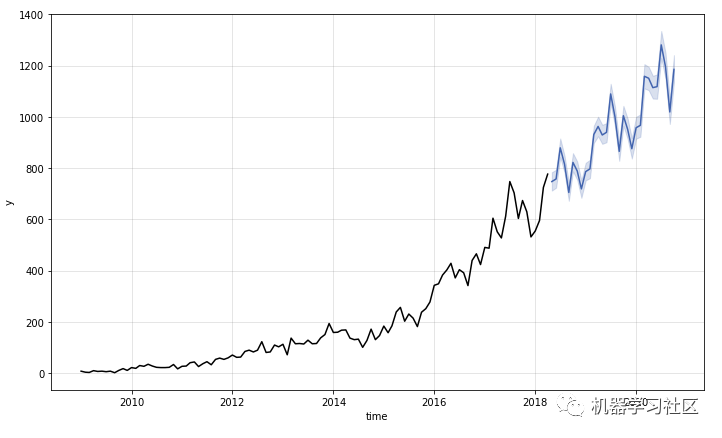
什么是 Kats?
目前时间序列分析以及建模的技术非常多,但相对散乱,本次 FaceBook 开源了 Kats,它是一款轻量级的、易于使用的、通用的时间序列分析框架,包括:预测、异常检测、多元分析和特征提取嵌入。你可以将 Kats 视为 Python 中时间序列分析的一站式工具包。
安装 Kats
pip install --upgrade pip pip install kats
为了了解 Kats 的功能,我们将使用这个框架来分析 Kaggle 上的 StackOverflow问题计数问题。数据链接为:https://www.kaggle.com/aishu200023/stackindex
首先我们从读取数据开始。
import pandas as pd
df = pd.read_csv("MLTollsStackOverflow.csv")
# Turn the month column into datetime
df["month"] = pd.to_datetime(df["month"], format="%y-%b")
df = df.set_index("month")
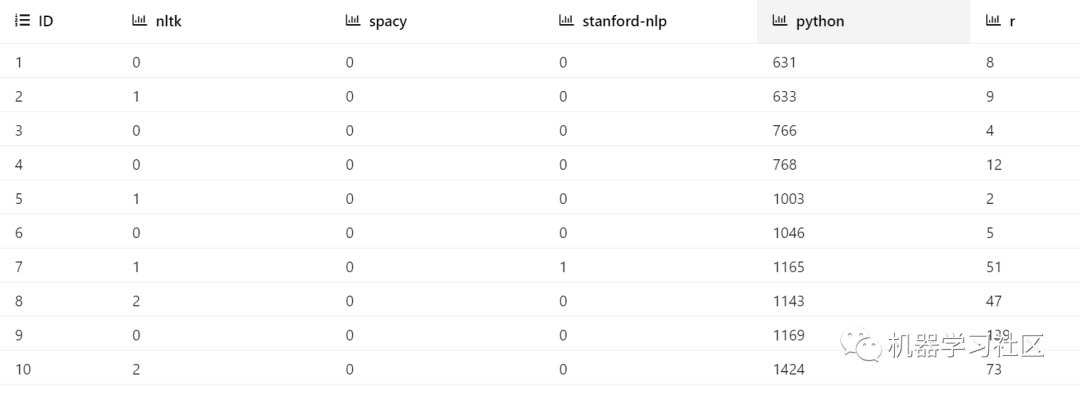
现在让我们分析一下与 Python 相关的 StackOverflow 问题计数。数据被分成一列和一个测试集来评估预测。
python = df["python"].to_frame() # Split data into train and test set train_len = 102 train = python.iloc[:train_len] test = python.iloc[train_len:]
将数据转换为时间序列
首先构造一个时间序列对象。我们使用time_col_name='month'指定时间列。
from kats.consts import TimeSeriesData # Construct TimeSeriesData object ts = TimeSeriesData(train.reset_index(), time_col_name="month")
要绘制数据,调用plot方法:
ts.plot(cols=["python"])
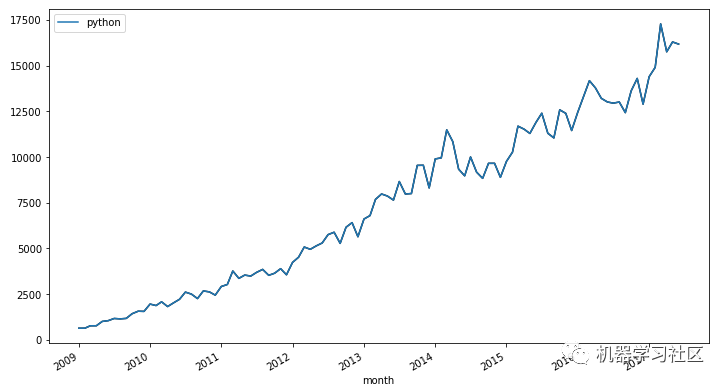
酷!看起来关于 Python 的问题的数量随着时间的推移而增加。我们能预测未来30天的趋势吗?是的,我们可以和 Kats 一起做。
预测
Kats目前支持以下10种预测模型:
Linear
Quadratic
ARIMA
SARIMA
Holt-Winters
Prophet
AR-Net
LSTM
Theta
VAR
上述模型较多,让我们试一下其中两种类型吧!
从使用 Prophet 进行预测开始:
from kats.models.prophet import ProphetModel, ProphetParams # Specify parameters params = ProphetParams(seasonality_mode="multiplicative") # Create a model instance m = ProphetModel(ts, params) # Fit mode m.fit() # Forecast fcst = m.predict(steps=30, freq="MS") fcst
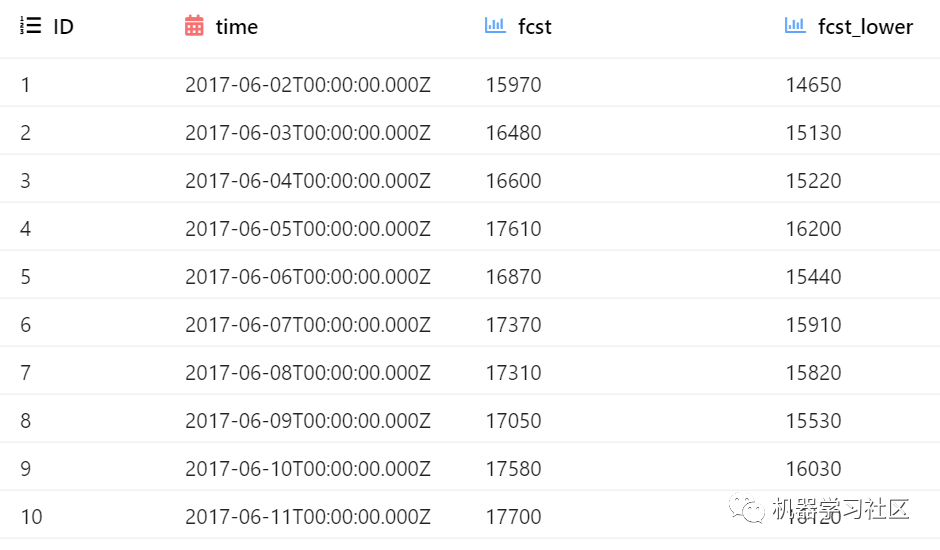
可视化
m.plot()
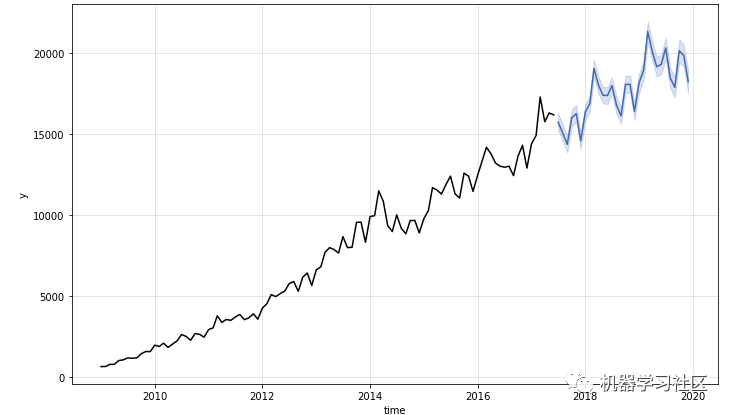
酷!让我们通过与测试数据的比较来评估预测。
import matplotlib.pyplot as plt fig, ax = plt.subplots(figsize=(12, 7)) train.plot(ax=ax, label="train", color="black") test.plot(ax=ax, color="black") fcst.plot(x="time", y="fcst", ax=ax, color="blue") ax.fill_between(test.index, fcst["fcst_lower"], fcst["fcst_upper"], alpha=0.5) ax.get_legend().remove()
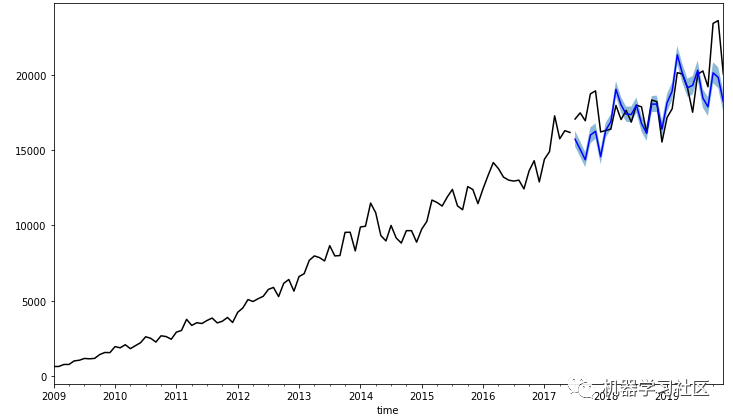
预报似乎很好地符合观察结果!
Holt-Winters
我们将尝试的下一个模式是Holt-Winters。它是一种捕捉季节性的方法。下面是如何在 Kats 中使用 Holt-Winters 方法。
from kats.models.holtwinters import HoltWintersParams, HoltWintersModel
import warnings
warnings.simplefilter(action='ignore')
params = HoltWintersParams(
trend="add",
seasonal="mul",
seasonal_periods=12,
)
m = HoltWintersModel(
data=ts,
params=params)
m.fit()
fcst = m.predict(steps=30, alpha = 0.1)
m.plot()

检测变化点
你有没有想过在你的时间序列中发生统计上显著的均值变化的时间?
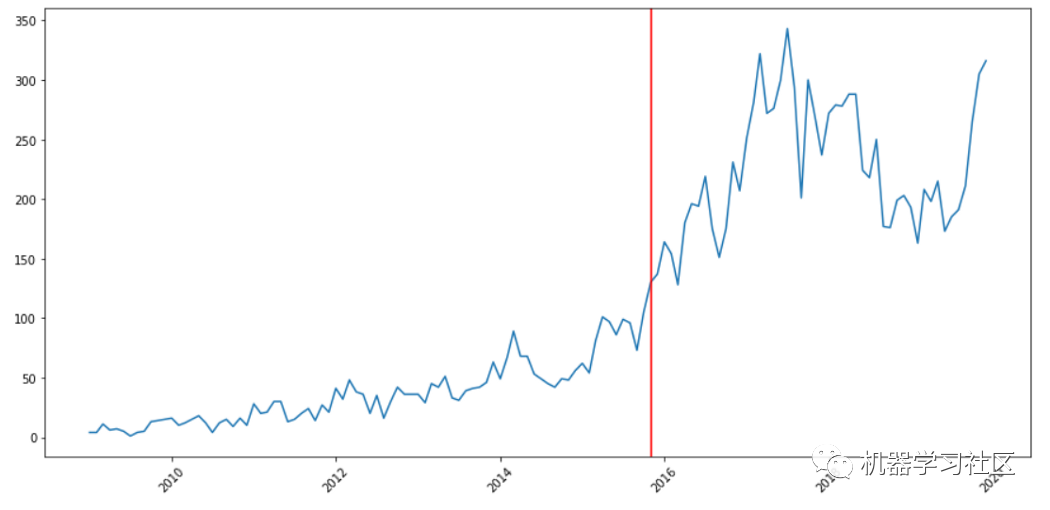
Kats 允许使用 CUSUM 算法检测变化点。Cusum 是一种检测时间序列中均值上下移动的方法。
让我们看看如何检测 Kats 中的变化点。
from kats.consts import TimeSeriesData, TimeSeriesIterator
from kats.detectors.cusum_detection import CUSUMDetector
import matplotlib.pyplot as plt
detector = CUSUMDetector(ts)
change_points = detector.detector(change_directions=["increase", "decrease"])
print("The change point is on", change_points[0][0].start_time)
# plot the results
plt.xticks(rotation=45)
detector.plot(change_points)
plt.show()
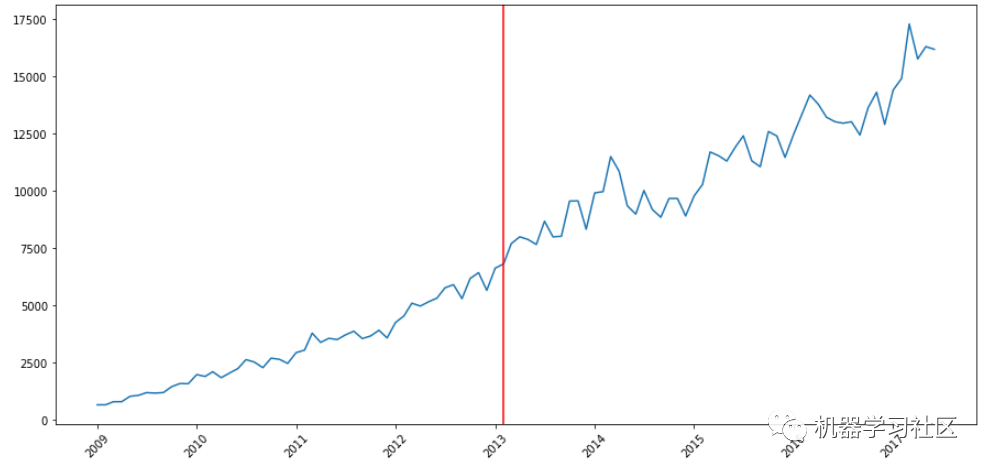
酷!让我们尝试检测 StackOverflow 问题计数的其他类别的变化点。
首先创建一个函数来检测主题提供的更改点。
def get_ts(topic: str):
return TimeSeriesData(df[topic].to_frame().reset_index(), time_col_name="month")
def detect_change_point(topic: str):
ts = get_ts(topic)
detector = CUSUMDetector(ts)
change_points = detector.detector()
for change_point in change_points:
print("The change point is on", change_point[0].start_time)
# plot the results
plt.xticks(rotation=45)
detector.plot(change_points)
plt.show()
机器学习
detect_change_point("machine-learning")
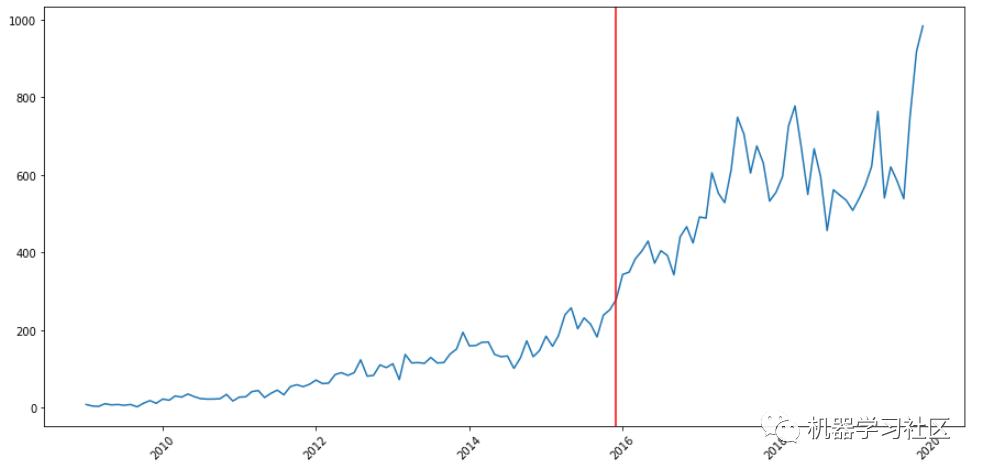
深度学习
detect_change_point("deep-learning")

孤立点检测
你在看NLP的时间序列时看到了什么?
df["nlp"].plot()
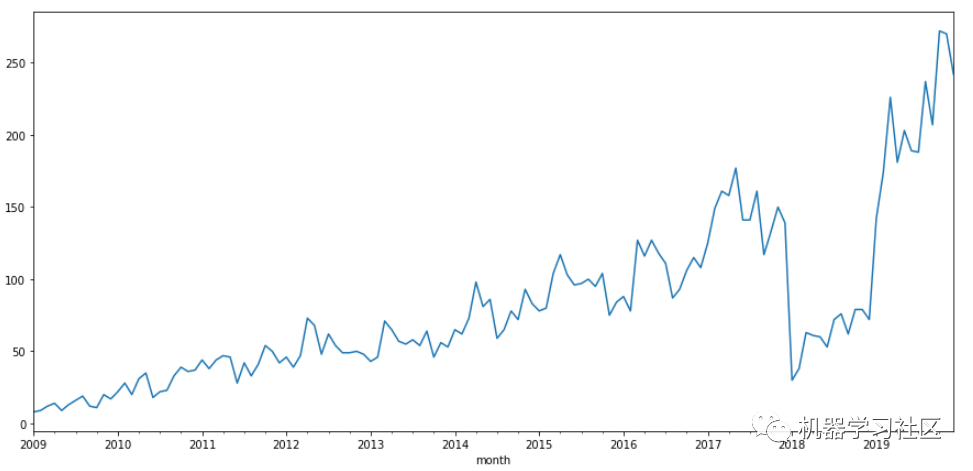
从2018年到2019年,NLP的问题数量有所下降。
问题数量的下降是一个异常值。检测异常值很重要,因为它们可能会在下游处理中造成问题。
然而,通过查看数据来发现异常值并不总是高效和容易的。幸运的是,Kats还允许您检测时间序列中的异常值!
用kat检测异常值只需要几行行代码。
from kats.detectors.outlier import OutlierDetector
# Get time series object
ts = get_ts("nlp")
# Detect outliers
ts_outlierDetection = OutlierDetector(ts, "additive")
ts_outlierDetection.detector()
# Print outliers
outlier_range1 = ts_outlierDetection.outliers[0]
print(f"The outliers range from {outlier_range1[0]} to {outlier_range1[1]}")
The outliers range from 2018-01-01 00:00:00 to 2019-03-01 00:00:00
酷!结果证实了我们从上图中看到的情况。
时间序列特征
除了统计数据外,时间序列中还有其他一些特性,如线性、趋势强度、季节性强度、季节性参数等,您可能会感兴趣。
Kats 允许通过 TsFeatures 查找有关时间序列特征的重要信息:
from kats.tsfeatures.tsfeatures import TsFeatures model = TsFeatures() output_features = model.transform(ts) output_features
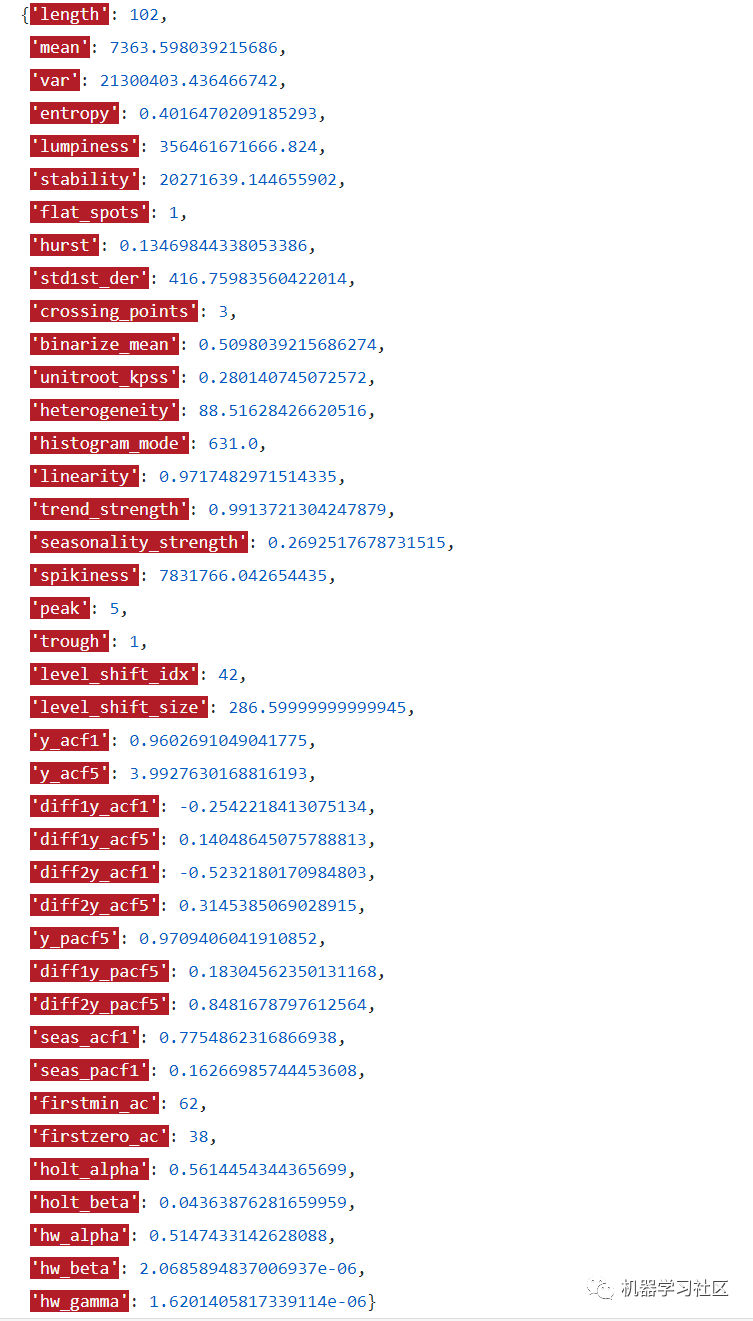
小结
我们刚刚学习了如何使用 Kats 来预测、检测变化点、检测异常值和提取时间序列特征。我希望这篇文章能帮助到大家解决工作中的时间序列问题,并从数据中提取有价值的信息。
加载全部内容